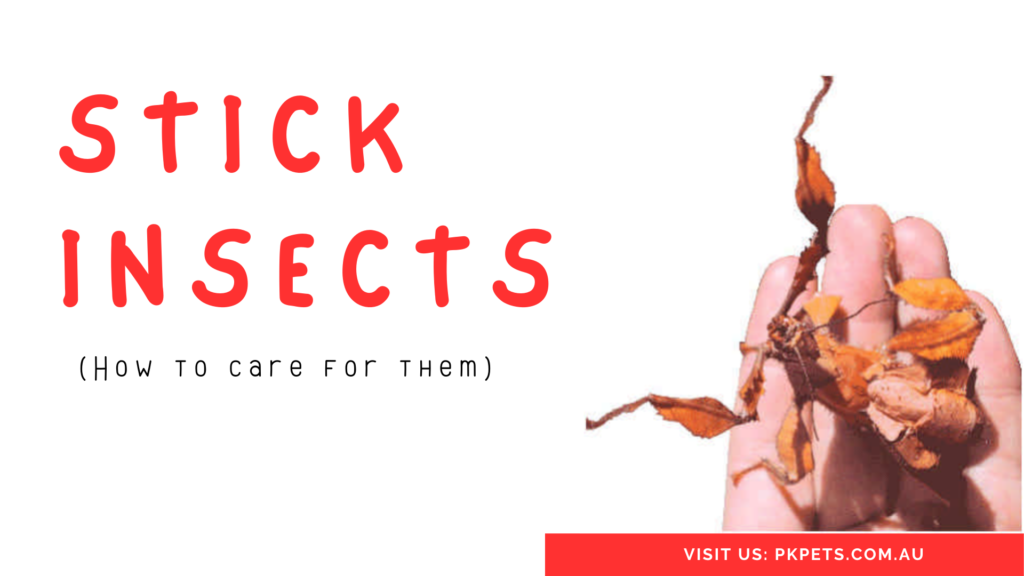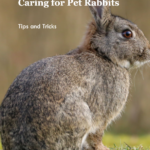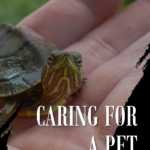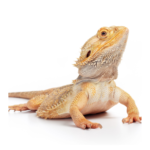Many people are now discovering the fascinating world of keeping insects as pets. The most common insects kept as pets are Leaf Insects (Phylliinae), Stick Insects (Phasmatidae) and Tooth-bearing Stick Insects (Necrosciinae). These insects eat only leaves and should not be confused with preying mantis species which eat other insects. Leaf and stick insects normally closely resemble the twigs and leaves of the plants they commonly feed on. They are well camouflaged and it’s interesting that they normally move when hiding by swaying slightly, like a twig in the breeze. About 150 Australian species are known, compared to approximately 2500 species world-wide.
They eat Bramble
Almost all stick insects feed on bramble (blackberry) and can be fed this all year round. Although this may not be their native food, they will eat it. Many Australian species eat gum leaves and other native plants.
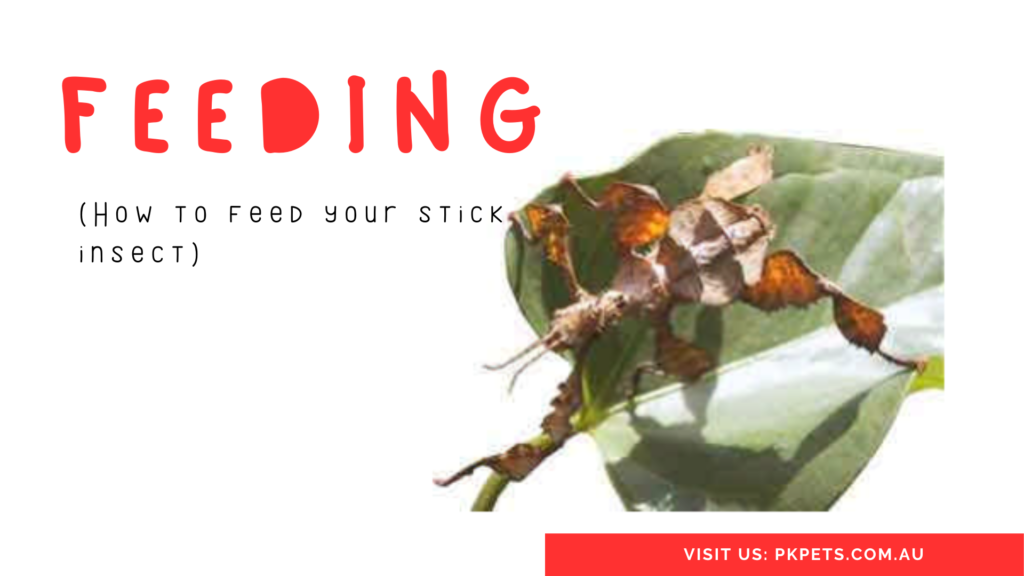
If given a variety, you can quickly learn what types of plants stick insects will eat and what they avoid. No plants are known to be poisonous to them, but it is assumed that they will not eat a plant that they do not like anyway.
Mesh Cages are Ideal
Insects can be housed in anything from old containers to completely dedicated cages. Extremely tall mesh cages are available and ideal for stick insects, but not really necessary. As long as they have plenty of room to move and climb they will be happy. Some stick insects can even fly, and can even be let out into a room to fly around a little before returning to their home.
Thenogenesis
An amazing fact about these creatures is their ability to reproduce by thenogenesis. This means they can reproduce without mating. The female can lay an unlimited number of fertilized eggs, however all the offspring will be female. Only when the female has mated with she lay male and female eggs. In the wild their eggs usually just drop to the ground, but some species bury them in the ground, while others stick them in crevices on the host plant or tree.
Most insects are extremely easy to look after, they normally only require food and water, and not all the heating, lighting and other special items required by other pets. Many stick insects are also good to handle, for those that love to handle bugs of course. Lift adults by the middle of their bodies and medium-sized insects by their tails. It’s best not to touch baby stick insects as they are delicate.
Other types of insects commonly kept as pets are cockroaches, preying mantis and beetles. Other similar pets are worms, caterpillars, butterflies, moths, scorpions and spiders.
Basic Requirements
If you are about to get an insect, you need to make sure you have the basic requirements, before you even bring them home! Here is a list of the basic requirements for any insects.
- Vivarium or enclosure
- Food (Eucalyptus, Bramble)
- Spray Bottle (For misting the leaves)
Optional Requirements
- Large aquarium / vivarium
- Aquarium backgrounds
- Peat
- Ornaments
Breakdown
Suitable For People Aged: 10 & over
Experience Required: None. Care sheet & info
Feeding Care Time Required: 10 minutes a day
Maintenance Time Required: 1/2 Hour a Week
Minimum Space Required: Vivarium
Cost of Upkeep: (approx) $3 Per Week
Life Span: (approx) 11 weeks to 4 years
Availability: Seasonal depending on species
About Stick Insects
Phasmids are insects that eat leaves and resemble leaves or sticks. They are usually green or brown but may reveal brightly coloured underwings when they fly. They have developed many unusual shapes to camouflage themselves to avoid detection by predators. The order Phasmatodea contains the largest insects in Australia including the Great Brown Stick Insect which measures up to 30cm in length.
The leaf like appearance of leaf insects makes them very difficult to detect. They are not very active during the day but move about to feed on foliage at night. These insects appear awkward and slow when they move and often rest with one leg extended and gently sway on the branches. This gives them the appearance of a dried twig or leaf swaying in the breeze. They depend on their resemblance to leaves and twigs to protect them from predators.
All phasmids are plant-eaters. Leaf insects should not be confused with mantids, although they have a similar appearance. Mantids such as the Preying Mantis are insect eaters and on close inspection, mantids have forelegs modified for grasping and holding prey.
One interesting Australian phasmid is the Spiny Leaf Insect (Extatosoma tiaratum), also called Macleay’s Spectre Stick Insect. The females of this species have very large bodies but very short wings and are unable to fly. The males are long and slim with fully developed wings. Spiny Leaf Insects are popular pets in Australia and also overseas.
Housing
In general, the more common species of Stick-Insect can be kept together. If you are breeding more difficult species then it pays to use separate cages to create individual requirements. Any basic enclosure or vivarium can be suitable. Stick insects are long thin animals, which hang down from their food plants to shed their skins. It is therefore most important that the cage has sufficient depth, as a general rule it should be three times as high as the adult length of the stick insects to be kept in it. It is also useful to have it so designed that you can easily replace the food plant material whenever it is required.
Most stick insects come from tropical or semi tropical environments and are happiest between 23°C and 26°C, though the common Indian stick insect (Carausius morosus) and some of its relatives are happy at normal home temperatures of between 15°C and 23°C. Heating, if required, can be achieved with a heat lamp and bulb. It is important to make sure the stick insects cannot reach the light bulb, as they will burn themselves on it. A red bulb should be used during the hours of darkness, or a ceramic element can be used 24 hours a day.
Not all sticks share a common need for humidity, some species such as Carausius Morosus will be happy to live in a fairly open cage, whereas others such as Epidares Nolimetangere will require an almost totally enclosed cage with around 80% relative humidity. Regardless of this all Sticks need water and it is a good policy to thoroughly mist the inside of the cage including all the food plant material each evening or daily. Some stick insects such as Haaniella sp need open water in a low bowl to drink, don’t be to concerned if they leave their heads under water remember that insect breath through their thoracic and abdominal spiracles not through their mouths like us. Note also that in some places tap water can harm some species, so it doesn’t hurt to use either rain water or to let the tap water stand for a day or two.
In general, the more common species of Stick-Insect can be kept together. If you are breeding more difficult species then it pays to use separate cages to create individual requirements. Any basic enclosure or vivarium can be suitable. Stick insects are long thin animals, which hang down from their food plants to shed their skins. It is therefore most important that the cage has sufficient depth, as a general rule it should be three times as high as the adult length of the stick insects to be kept in it. It is also useful to have it so designed that you can easily replace the food plant material whenever it is required.
Most stick insects come from tropical or semi tropical environments and are happiest between 23°C and 26°C, though the common Indian stick insect (Carausius morosus) and some of its relatives are happy at normal home temperatures of between 15°C and 23°C. Heating, if required, can be achieved with a heat lamp and bulb. It is important to make sure the stick insects cannot reach the light bulb, as they will burn themselves on it. A red bulb should be used during the hours of darkness, or a ceramic element can be used 24 hours a day.
Feeding
Not all sticks share a common need for humidity, some species such as Carausius Morosus will be happy to live in a fairly open cage, whereas others such as Epidares Nolimetangere will require an almost totally enclosed cage with around 80% relative humidity. Regardless of this all Sticks need water and it is a good policy to thoroughly mist the inside of the cage including all the food plant material each evening or daily. Some stick insects such as Haaniella sp need open water in a low bowl to drink, don’t be to concerned if they leave their heads under water remember that insect breath through their thoracic and abdominal spiracles not through their mouths like us. Note also that in some places tap water can harm some species, so it doesn’t hurt to use either rain water or to let the tap water stand for a day or two.
Handling
Great care should be taken in handling stick insects, remember they are living creatures just like you. Some species such as the spiny leaf insect are relatively sturdy, while species such as Pink Wings (sipyloidea sipylus) tend to lose their legs very easily. Also it should be noted that spiny leaf insects can and will pinch (with their thorny limbs) and bite if not used to being handled, other species such as the American Walking Stick (anisomorpha bupestroides) and to a lesser extent Pink Wings have a defensive chemical spray which can cause temporary blindness and considerable pain to an adult.
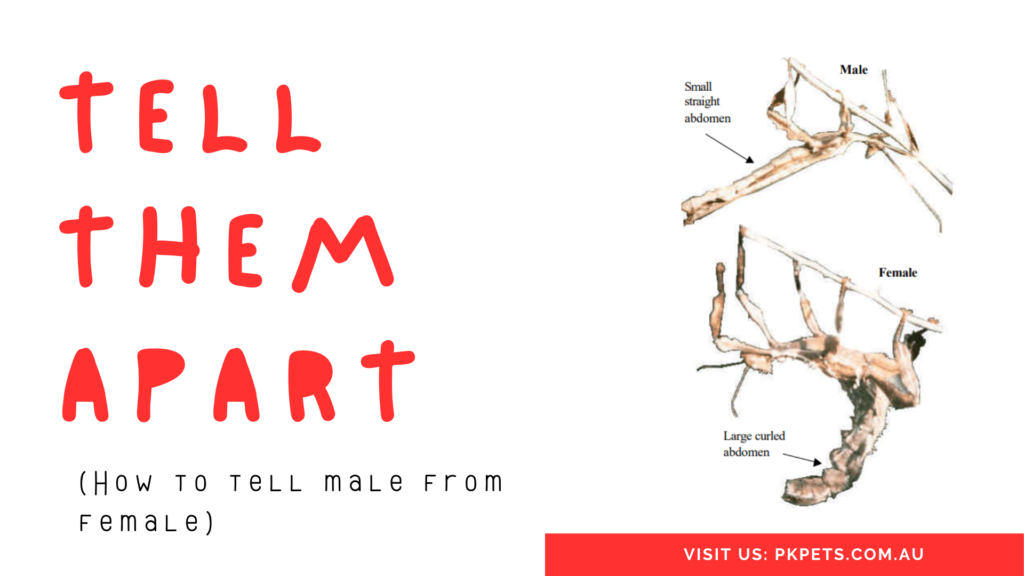
Breeding
Female Spiny Leaf Insects are not only larger than the males, but also live longer. They lay thousands of eggs during their adult life, flicking them onto the ground below their perch. The eggs have a knob, called a capitulum, which is attractive to ants. Ants carry the eggs back to their underground nests, eat only the knob, and leave the rest of the egg in the nest, protected from other animals that might eat it.
The young phasmids (or nymphs) hatch after one to three years underground and look and behave like red headed black ants. They emerge from the ant nest and climb rapidly upwards, looking for soft green leaves. In a tree, they moult into a green or brown, slow-moving leaf mimic. The females live for about 18 months, while the males are only short-lived, surviving for around 6-8 months. Amazingly, the female does not need to mate to produce fertile eggs, however, without mating all her eggs will hatch as females.
General
Some stick insects can fly while others cannot. The spiny leaf insect female can’t fly, while the male can with a small set of wings. The spiny leaf insect is the most common stick insect for keeping as a pet. They are easy to maintain and look after, and cost little, as their food is available from your local park. Always make sure you are aware of their relatively short life span. When you purchase a spiny leaf insect as a pet, its most likely already a few months old. A male would not make as good a pet as the female because of this.

